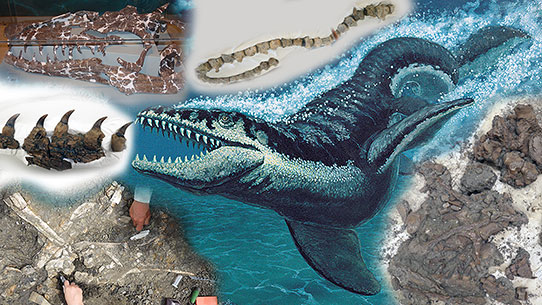Crowdfunding is a not a new concept. This practice has become more popular lately since the advent of the internet and social media but has been around in various forms for centuries. The idea is to fund a project with small donations from a large number of people, rather than fund it from large donations from a small number of people. The concept is used to raise money for virtually any product or idea that can garner support, including scientific research.

Mosasaur skeletons within the North Dakota State Fossil Collection.
Recently the North Dakota Geological Survey has partnered with a researcher from Texas to study the mosasaurs in the North Dakota State Fossil Collection. Mosasaurs are not dinosaurs but a type of swimming reptile closely related to the Komodo Dragon found in Indonesia today. Mosasaurs lived at the same time as dinosaurs, ruling the oceans while dinosaurs ruled the land. The mosasaur specimens found in the ND State Fossil Collection are all from rocks called the Pierre Formation and are approximately 80 million years old. These rocks were deposited in North Dakota at a time when a shallow sea called the Western Interior Seaway connected the Gulf of Mexico to the Hudson Bay. Currently there are six partial skeletons of mosasaurs in the ND State Fossil Collection and some other unassociated fragments of bones. Study of these specimens would help shed light on the kinds of mosasaurs living in ND at this time as well as putting North Dakota’s underwater world into a more regional context. Our paleontologists with the North Dakota Geological Survey are not specialists with these types of animals, so outsourcing the research is the best way to get the work accomplished.
We hope that you are as excited as we are to learn what the mosasaurs in our collection have to tell us. When this crowdfunded study is complete, we plan to share that information with you through an online open-access journal and our website. Stay tuned!

